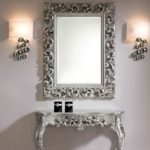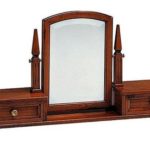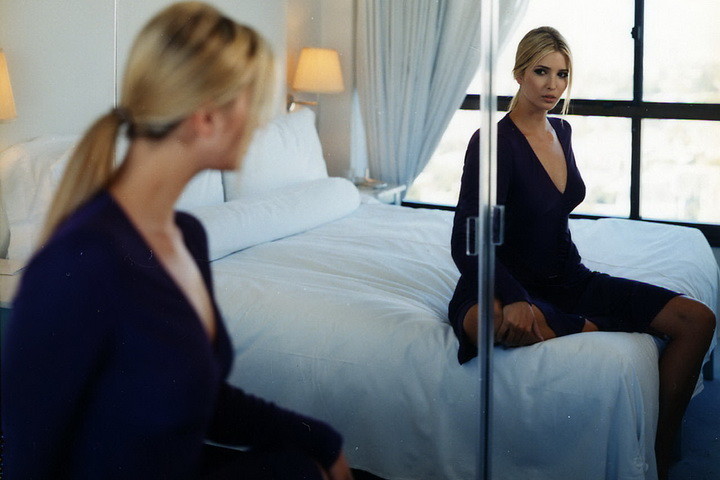What does a mirror consist of?
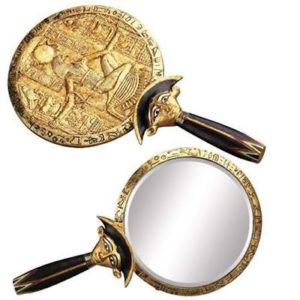 Man has always been interested in his own reflection. Even in ancient times, people studied their appearance with interest, looking at the reflection in the water. Over time, they invented such an irreplaceable item as a mirror. The reflection in the first similar products was not very clear, because they were polished plates that were made of bronze, silver or copper. These objects made of platinum or tin, richly decorated with jewelry, are found in the ruins of ancient cities.
Man has always been interested in his own reflection. Even in ancient times, people studied their appearance with interest, looking at the reflection in the water. Over time, they invented such an irreplaceable item as a mirror. The reflection in the first similar products was not very clear, because they were polished plates that were made of bronze, silver or copper. These objects made of platinum or tin, richly decorated with jewelry, are found in the ruins of ancient cities.
The content of the article
Mirror production technology
When people learned to make glass, the technology for making mirrors also changed. In Rome, for example, metal plates were placed under multi-colored glass. Since the 13th century, they learned to fill a glass plate with molten tin. With this method, the image was greatly distorted, but it still existed until the 16th century.
REFERENCE! The first manufacturers of mirrors in the Middle Ages were glassblowers. It was they who came up with technologies similar to modern ones.
In the 16th century, an alloy called amalgam was invented. It was used to cover the underside of a glass sheet, which darkened the surface and allowed a dark reflection to be seen. The substance was highly poisonous, which made the work of making mirrors dangerous. Workers involved in production often died, and the items themselves did not last long. After some time, this technology had to be abandoned.
REFERENCE! Amalgam is a poisonous alloy of tin and mercury.Even the vapors released by it are lethal to humans.

It was only in the 19th century that safety coating was invented. What did it consist of? A layer of silver was applied to the glass plate and secured with paint. This method allowed us to obtain a bright and clear reflection.
Outdated technology
There are several types of mirror production. According to old technology, mirrors were made in this way:
- the glass was cut into pieces of the required size;
- the resulting workpieces were polished and ground, giving absolute smoothness;
- technological holes were made for attaching handles and frames;
- the workpieces were washed with a special product to remove even stubborn dirt;
- they sprayed a layer of aluminum or titanium - sometimes other metals were used;
- A layer of varnish paint was applied on top.
This method is not much different from that invented in the 19th century. Production is low-cost, but allows for the production of only small-sized products.
Modern mirror production
Like the ancient, modern mirror consists of glass covered with a reflective layer underneath. For glass production they use:
- soda;
- dolomite;
- quartz sand;
- coal;
- feldspar;
- Recycled glass shards.
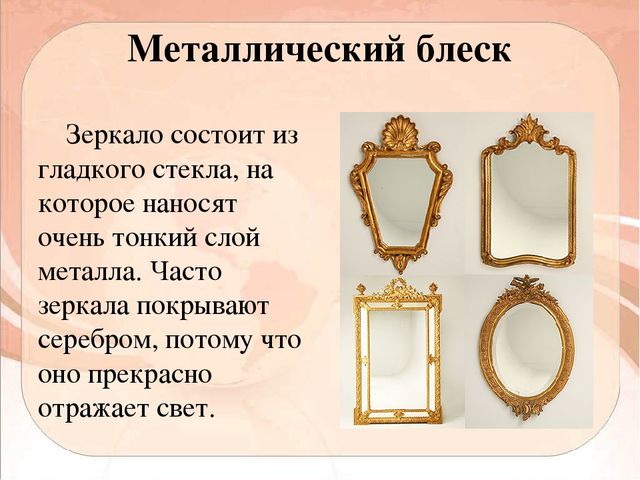
All components are cleaned, melted and mixed in the required proportions. The finished glass plate is carefully polished to eliminate distortions. When the glass plate is ready, proceed to the production of the mirror:
- cutting is done on machines using rough diamonds;
- then comes bevelling, i.e. correct processing of the edge of the glass - the bevel can be steep and wide, depending on the desired type of mirror;
- glass is well washed and degreased - for this it is treated with steam, cleaned with brushes with chalk powder, dried, then wiped with alcohol or gasoline;
- to obtain a reflective layer, a silver coating is applied;
- the newest method is to apply aluminum in a vacuum under pressure - in the vacuum where the glass is placed, the aluminum evaporates and settles on it in an even layer, so the coating is more durable and of higher quality;
- then a coating is applied to the metal layer to protect it - usually a film of copper;
- the copper layer is covered with an opaque layer of varnish paint;
- the finished product is enclosed in a frame or frame.
REFERENCE! If a layer of silver is applied two or three times, this increases the quality of the product, but significantly increases its cost.
Aluminum is used for ordinary mirrors, and silver is used for more expensive furniture ones.

